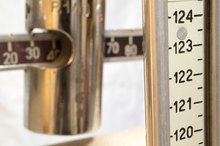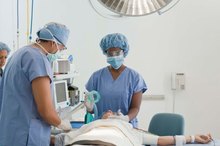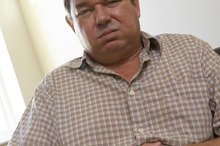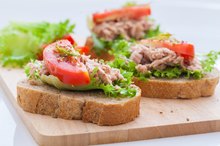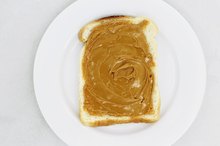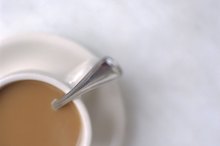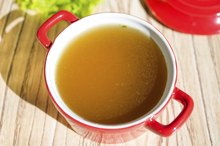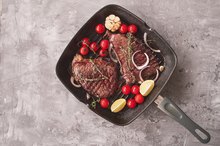The good news is, you don't need your gallbladder to function normally 1. The bad news is that after gallbladder removal surgery, you may experience digestive problems for a short period 5. You can reduce your symptoms by adjusting your diet.
Gallbladder Removal Surgery
Otherwise known as a cholecystectomy, gallbladder surgery removes the small, pear-shaped organ that sits beneath the liver 3. The gallbladder stores a fluid called bile, which your liver produces to aid fat digestion.** As food is digested in the stomach and intestine, your gallbladder releases bile via the common bile duct, which connects your gallbladder and liver to your small intestine. When you have your gallbladder removed, the liver takes over the gallbladder's function.
Typically, gallbladder removal surgery is required when something blocks the bile duct. Gallstones — particles of hardened bile cholesterol — are usually the cause of gallbladder issues. There may be gallstones in the gallbladder itself, as well as the bile duct. Gallstones may also cause gallbladder inflammation, or cholecystitis, and inflammation of the pancreas, or pancreatitis. Large polyps in the gallbladder are also sometimes cause for removal 5.
Read more: Foods to Relieve Gallbladder Attacks
- Otherwise known as a cholecystectomy, gallbladder surgery removes the small, pear-shaped organ that sits beneath the liver 3, which your liver produces to aid fat digestion.
- When you have your gallbladder removed, the liver takes over the gallbladder's function.
What Happens During Gallbladder Surgery?
Gallbladder Dyskinesia Diet
Learn More
Gallbladder surgical processes differ depending on your condition and on your healthcare provider's treatment plan. There are two types of gallbladder surgery:
Open method: An incision is made on the right side or upper part of your abdomen and the gallbladder is removed 3.** Drains may be inserted in the incision for drainage of fluids and pus.
Laparoscopic method: Three or four incisions are made in your abdomen and carbon dioxide gas is put in your abdomen to make it swell up so that the surgeon can easily see your gallbladder and adjacent organs. When the procedure is complete, the laparoscopic tools are removed from your abdomen and the gas escapes through the incisions or is absorbed by the body.
After both procedures, your incisions will be closed either with surgical staples or stitches, and your wounds will be covered with a sterile bandage or adhesive strips. Your doctor will also send your gallbladder to a lab for testing.
The majority of gallbladder removal surgeries are performed laparoscopically; however, some people may need to have open removal for various reasons, including 36:
- Severe scarring from a previous surgery
- A bleeding disorder
- Any condition that makes it hard for the surgeon to see through the incisions
Of the two types of procedure, the open method is more invasive. Patients can typically go home the day of laparoscopic gallbladder removal surgery, and full recovery takes one week, according to Mayo Clinic 356. After open method gallbladder surgery, patients may need to stay in the hospital three days.** Full recovery can take four to six weeks.
- Gallbladder surgical processes differ depending on your condition and on your healthcare provider's treatment plan.
- The majority of gallbladder removal surgeries are performed laparoscopically; however, some people may need to have open removal for various reasons: * Severe scarring from a previous surgery * A bleeding disorder * Any condition that makes it hard for the surgeon to see through the incisions Of the two types of procedure, the open method is more invasive.
Post-Gallbladder Removal Diet
In addition, increasing your fiber intake may help normalize bowel movements. A type of fiber called soluble fiber, in particular, may be especially helpful to bind bile in the stomach in between meals. Sources of soluble fiber include:
- oats
- barley
- beans
- lentils
- peas
- some vegetables
When increasing your fiber intake, do so very gradually; increasing it too quickly can cause bloating and gas.
Long-Term Dietary Recommendations
A Diet for After Your Gallbladder Has Been Taken Out
Learn More
Continue to follow this diet for as long as your symptoms persist, or until your doctor says you can resume a normal diet. When you do so, begin to include more fat in your diet gradually, as adding back fat too quickly can cause further digestive problems.
Moving forward, it's important to maintain a healthy diet. Gallbladder problems are sometimes associated with being overweight 1.** Even though your gallbladder has been removed, carrying excess body weight can still cause problems for your liver, which now has to handle the gallbladder's function in addition to its previous functions.
Being overweight can cause damage to the liver similar to alcohol abuse, according to Providence Medical Group physician Mark Thompson, MD 8. Obesity can cause fatty deposits to collect in the liver, leading to a condition called fatty liver disease. This can reduce your liver's ability to function properly.**
Even after you recover, you should continue to be wise about your fat intake. Limit your intake of these foods and opt for lean sources of protein including fish, chicken and beans.
Eat plenty of fresh fruits and vegetables and whole grains and moderate amounts of low-fat dairy. Starting a regular exercise plan can also help you control your weight and improve your overall health.
- Continue to follow this diet for as long as your symptoms persist, or until your doctor says you can resume a normal diet.
- When you do so, begin to include more fat in your diet gradually, as adding back fat too quickly can cause further digestive problems.
Related Articles
References
- MedlinePlus: "Gallbladder Diseases"
- Johns Hopkins Medicine: "Cholecystectomy"
- Mayo Clinic: "Cholecystectomy (Gallbladder Removal)"
- Journal of the Academy of Nutrition and Dietetics: "What Medical Nutrition Therapy Guideline Is Recommended Post-Cholecystectomy?"
- Mayo Clinic: "Can You Recommend a Diet After Gallbladder Removal?"
- Cleveland Clinic: "Laparoscopic Cholecystectomy (Gallbladder Removal)"
- Cleveland Clinic: "Cholecystitis"
- Providence Medical Group: "Can Obesity Cause the Same Kind of Liver Damage as Alcohol Abuse?"
- Cleveland Clinic. Gallbladder and biliary disease. Updated August 2010.
- MyHealth.Alberta.ca. Gallstones: Should I have gallbladder surgery? Updated November 7, 2018
- Cleveland Clinic. Gallbladder and biliary disease. Updated August 2010.
- American College of Surgeons. Cholecystectomy. Updated 2015.
- Cleveland Clinic. Bile duct exploration. Updated August 9, 2019.
- MyHealth.Alberta.ca. Gallstones: Should I have gallbladder surgery? Updated November 7, 2018
- Victoria State Government. Better Health Channel. Gallbladder-gallstones and surgery. Updated August, 2014.
- University of California San Francisco (UCSF). Choledochal cysts. Updated 2020.
- American Cancer Society. Surgery for gallbladder cancer. Updated July 12, 2019.
Writer Bio
Jody Braverman is a professional writer and editor based in Atlanta. She studied creative writing at the American University of Paris and received a Bachelor of Arts in English from the University of Maryland. She also received personal trainer certification from NASM and her 200-hour yoga teacher certification from YogaWorks.


